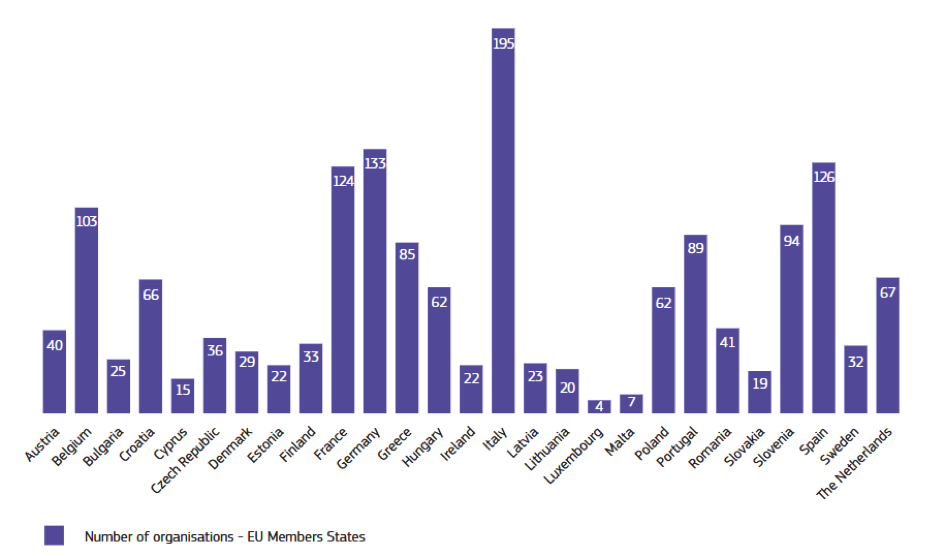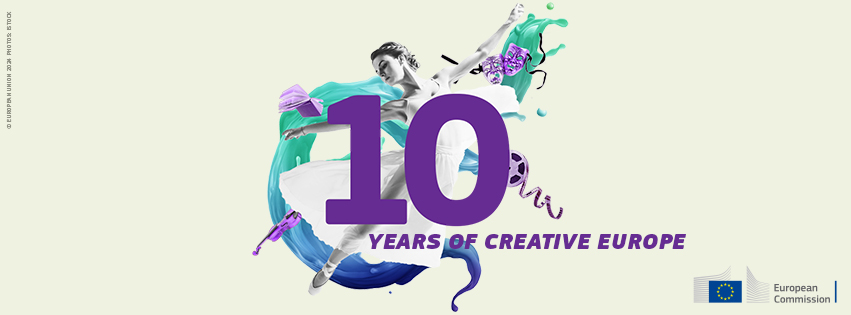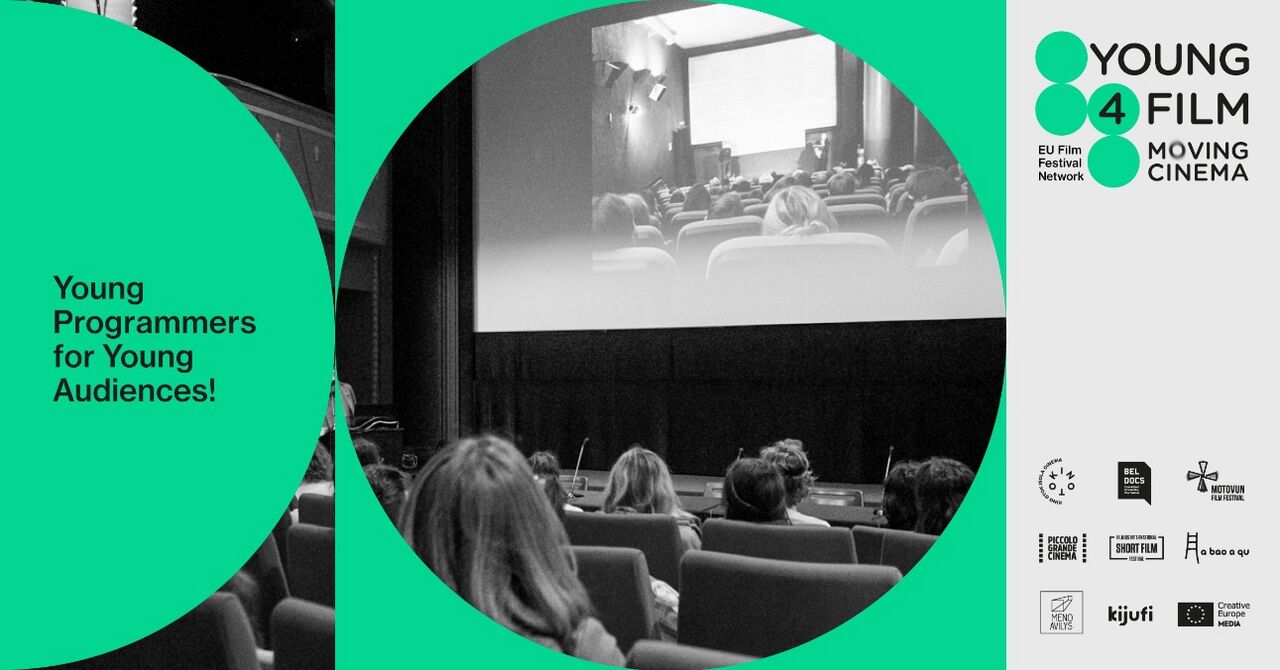The First Decade of the EU Creative Europe Programme
Written by Mateja Lazar, specialist in the field of international cultural cooperation, director of the Motovila Institute and head of Creative Europe Desk Slovenia.
Programme's mission
Creative Europe is the EU's flagship programme supporting cultural and creative sectors (CCS), with a budget of 2.44 billion EUR for the current period, 2021–2027. With an 80% higher budget compared to the previous seven-year period, the programme promotes cultural and linguistic diversity, European heritage, and competitiveness of these sectors. Its key focus includes measures to help these sectors face challenges, enhance their resilience, accelerate digital transformation, contribute to environmental protection, and advance inclusion and gender equality.
Last year marked 10 years since Creative Europe unified the previously separate Culture and MEDIA strands under one umbrella, adding a new Cross-sectoral strand to foster innovation and collaboration across creative sectors. Additionally, it incorporated the news media sector to ensure support for an independent and pluralistic media environment and promote media literacy.
Creative Europe supports artistic and cultural collaboration and mobility across Europe, encouraging the creation of new European works and their global circulation, fostering innovation, and strengthening the economic and social dimensions of Europe's cultural, audiovisual, and other creative sectors. By encouraging international engagement and the development of long-term cross-border partnerships, Creative Europe makes an important contribution to the sustainable growth of these sectors – including in Slovenia.
Slovenia's achievements in numbers
At Motovila Institute, where we monitor the successes of Slovenian organisations participating in the programme as part of the Creative Europe Desk Slovenia, we are aware of the importance of this flagship instrument of the European Union for the Slovenian culture and AV sector. What achievements are we talking about?
In the period 2014–2020, Slovenian organisations acting as leaders of European projects under the Culture, MEDIA and Cross-sectoral strands secured a total of 24.3 million EUR in EU funding, amounting to almost 3.5 million EUR per year. Owing to the way records of EU grants are kept by the European Education and Culture Executive Agency (EACEA), which is responsible for managing the calls, unfortunately no data are available on the amount of EU support received by Slovenian organisations when participating as project partners. However, considering all the supported projects with Slovenian participation, we can conclude that the total amount of EU funding obtained for the 300 or so projects (which is an incredible figure!) in which Slovenian organisations participate as leaders and partners is even higher.
Creative Europe 2014–2020: 24.3 million EUR (3.5 million EUR annually) for 71 Slovenian organisations (as leaders):
- 19.4 million EUR for the Culture strand;
- 4.5 million EUR for the MEDIA strand;
- 0.4 million EUR for the Cross-sectoral strand.
Ongoing success in 2021–2023
Currently, in the middle of a new 7-year period (2021–2027), Slovenia has already achieved extraordinary results. In just the first three years (2021–2023), 124 different Slovenian organisations successfully secured 17.3 million EUR in EU support for 167 projects, amounting to 5.8 million EUR annually!
Creative Europe 2021–2023: 17.3 million EUR (5.8 million EUR annually) for 124 Slovenian organisations (leaders and partners):
- 12.3 million EUR for the Culture strand;
- 4.1 million EUR for the MEDIA strand;
- 0.9 million EUR for the Cross-sectoral strand.
The revised system for recording EU funding in the current period provides greater transparency, as we now have precise figures for the support received by each organisation, regardless of its role in the project (i.e. leader or partner, in cases where the call requires an international consortium). Although data for the current and previous programming periods are only partially comparable, there is a clear indication of both a significant increase in EU funding for Slovenia on an annual basis and a rise in the number of successful Slovenian organisations.
Allowing for the change in the recording system, it can be broadly estimated that Slovenia's cultural and creative sectors gained 41.6 million EUR in the first 10 years of Creative Europe, averaging 4.2 million EUR annually for culture and film from the EU budget.
International context
From 2021 to 2023, Slovenian organisations participated in 11.1% of all supported projects (1,501). Slovenia's remarkable success is also confirmed by the European Commission's "Creative Europe 2021-2022 – Monitoring report" (Publications Office of the European Union, 2023), which presents the results of Creative Europe’s implementation in 2021 and 2022. Slovenia is ranked alongside all 40 European countries participating in the programme.
In 2021 and 2022, grants were awarded to 3,860 organisations (2,146 in the Culture strand, 1,452 in the MEDIA strand and 262 in the Cross-sectoral strand) that took on the roles of leaders, partners or associated partners. The majority of Europe's cultural and creative sectors is made up of smaller organisations, as is also the case for Creative Europe beneficiaries – including from Slovenia. In the Culture strand, 73% of beneficiaries were small organisations (with 0–49 employees), with an even higher share in the MEDIA strand (89%) and also in the Cross-sectoral strand (80% small organisations).
In the Culture strand, transnational cooperation is at the core of all actions. Projects bring together organisations from different countries (usually at least three organisations from three eligible countries), sizes, types (NGOs, public, private) and sectors. In the 2021 and 2022 calls, Slovenia, with 94 organisations receiving EU support, is ranked an incredible 6th out of the 27 EU Member States, just behind Italy, Germany, Spain, France and Belgium!
 Number of organisations receiving EU support by origin (EU Member States - Culture strand)
Number of organisations receiving EU support by origin (EU Member States - Culture strand)
International networking in the film and AV sector
Slovenia's significant breakthrough in international collaboration and in managing large-scale partnership projects is also reflected in the results of the MEDIA strand for 2021 and 2022. These achievements reflect the broader trend promoted by Creative Europe of increased cooperation between international stakeholders to achieve greater synergies and strategic impact on the development of the European AV sector.
Since 2022, the Otok Cultural Institute, with the Kino Otok - Isola Cinema Festival, has successfully led the European network of film festivals Young Programmers for Young Audiences! (Young4Film). Supported by the Creative Europe programme, the network brings together festivals from Croatia, Italy, Lithuania and Serbia. Within the project, young people actively co-curate film programmes, which not only refreshes festival content but also contributes to the strategic development of young audiences – a key segment for the future of the film sector.
The Slovenian Animated Film Association (DSAF) is consolidating its international reputation as an important promoter of the capacity of the European AV sector. With the support of MEDIA, DSAF leads the CEE Animation Workshop training programme and participates as a partner in the CEE Animation Support Industry Programme, working together with organisations from the Czech Republic, Poland and Slovakia to enhance professionalisation and strengthen the competitiveness of the animation industry in Central and Eastern Europe.
 Rise & Shine is a pitching lab for young talents, organised as a collaboration between CEE Animation, Animafest Zagreb World Festival of Animated Film and Animateka International Animated Film Festival.
Rise & Shine is a pitching lab for young talents, organised as a collaboration between CEE Animation, Animafest Zagreb World Festival of Animated Film and Animateka International Animated Film Festival.
Vertigo remains the most internationally prolific Slovenian independent production company. In 2022, it received MEDIA support for the development of four new Slovenian films under the challenging European Slate Development call, where applicants from countries with greater AV capacity than Slovenia are traditionally more successful. As the most sought-after Slovenian co-producer on the international AV market, Vertigo has also been involved as a partner in the development of four additional European co-productions with Creative Europe support.
European platforms
Over the past decade, Slovenia has also been highly successful under the Culture strand, with particular achievements in the call for European platforms, which aim to increase the visibility of emerging European artists and support the development of their careers. In the period 2021–2023, Creative Europe co-financed only 16 such platforms, each bringing together sectoral organisations from at least 12 different countries – and two of them are led by Slovenian organisations.
Beletrina Publishing Institute leads the Versopolis platform, which creates opportunities for new European poets, connects hundreds of poets and poetry associations around the world, and has already brought together 36 international poetry festivals under its umbrella.
The Faculty of Architecture, University of Ljubljana leads the European architecture platform LINA, which supports young professionals and brings together 28 prominent international players in the field of architecture, steering the sector towards sustainable practices.
International partnerships
It is hard to imagine how Slovenian culture and film could have created so many international collaborations and partnerships without the support of Creative Europe. Most of the actions promote international networking, and Slovenian organisations have established an incredible 743 partnerships with 39 different countries in the period 2021–2023 alone.
The majority of these connections were made by organisations that received support for European cooperation projects under the Culture strand – as many as 563 partnerships with 38 different countries. Among Slovenia’s most frequent partners were neighbouring Italy and Croatia (with more than 50 partnerships each), followed by Spain (45), Belgium (40) and Germany (36), then Serbia and, surprisingly, Greece (both with over 30 partnerships with Slovenia), and then all the other countries, with the only one missing from the list being Liechtenstein.
Slovenia's significant achievements under the Creative Europe programme are testimony to its successful integration into European networks and partnerships and to its enhanced cultural and creative presence in the international arena.
See also
- Creative Europe Desk Slovenia
- Motovila Institute
- Creative Slovenia up to 2020: a fascinating feat
- A list of ALL Slovene organisations funded by the Culture and MEDIA Programmes 2000-2020
- Faculty of Architecture, University of Ljubljana
- Beletrina Publishing Institute
External links
- European Commission: Directorate-General for Communications Networks, Content and Technology, Creative Europe 2021-2022 – Monitoring report, Publications Office of the European Union, 2023
- CED Slovenia website
- Kino Otok Young4Film - Young Programmers for Young Audiences! European Film Festival Network
- Central and Eastern European Animation website
- LINA website
- Versopolis website




